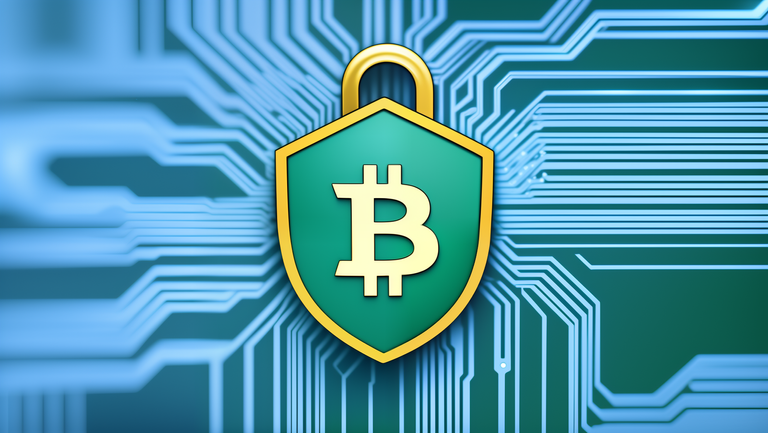
In my last post I explained how the 51% attack on proof-of-work chains is very misunderstood. The synopsis of it is: 51% attack enables only a denial of service attack – a very expensive one. But it can't change other consensus rules in any way because the attack can't compromise the nodes which enforce the consensus rules. There's no way with a 51% attack to steal or create bitcoin out of nothing. This is such a simple concept, and not understanding this creates massive opportunity cost of staying out of bitcoin based on an incorrect view of it.
Bitcoin nodes
Roughly there are two types of nodes: mining and non-mining nodes. It is the non-mining nodes that hold together the integrity of the network by enforcing consensus rules. The node software can be run with even just a Raspberry Pi or any other low-end miniPC and 1 terabyte SSD. Decentralization is ensured by having a low cost to run the bitcoin software so it is simple and lightweight on purpose. At the time of writing there are 18,000 reachable nodes, and the trend is in a steady long term rise.
Proof-of-work
One who finds a valid hash for a problem according to consensus rules gets block subsidy and transaction fees as a reward. It is a pure guessing game that simply requires energy ie. work. Hence, the name, proof-of-work. The reason why proof-of-work is arguably the strongest model for defining "truth", ie. the longest chain, is that energy is largely distributed across the world which no single entity can control. Second, it imposes heavy, tangible upfront cost in the form of energy for changing the past – reverting transactions. Bitcoin mining is really just a method to reach the consensus on the universally correct sequence of transactions. It is not a method for the actual consensus rules – which again, are defined by all bitcoin nodes running the bitcoin software.
The software evolution via hard forks vs. softforks
So many people, even in "crypto", mistakenly think that bitcoin is a static piece of technology, at the same stage it used to when it was launched, but that is not true. A lot upgrades have been added to bitcoin, the big contrast to altcoins (almost all of them) is just that bitcoin doesn't evolve via hard forks but via soft forks which are bitcoin software upgrades that do not violate the original consensus rules. The big benefit of this is remaining backwards compatibility. Which means, that as user you don't have to upgrade to a version you do not wish to use. You can ignore SegWit and Taproot and continue to run the old version, but still be compatible with the rest of the network. Although in practice the oldest Bitcoin Core versions around 0.8 and older (newest client is 26.0) might not work on default because of some data library changes. But the principle still stands. It is a slow and conservative
A lot of altcoins evolve by hard forking. This introduces a majority vote because if a small minority doesn't wish to adopt the change, they either have to continue with the old version, causing a hard fork which might be disruptive, or they have to adopt the change even if they don't agree with it. This is arguably coercive for the minority.
Nothing in principle prevents bitcoin from evolving by hard forking, but in practice such a change would need to be universally accepted by everyone to not create a split in the network. History with bitcoin forks is a clear indication that the market has established an appreciation for bitcoin that remains this conservative approach because all bitcoin forks are approaching a price of zero in bitcoin terms.
SegWit
Having mentioned SegWit, I'll give a brief overview of it.
It was a soft fork upgrade that did in fact raise the 1MB blocksize limit in practice. The way it was done was by segregating two different types of data – transaction and signing – into two different partitions with the original 1MB for transaction data and 3MB for signage (witness) data. It allowed it to remain backwards compatible but with a theoretical upper limit of 4MB per block. In practice they usually aren't even close to that thought. So bitcoin blocksize has in fact been raised, but in a way that maintained backwards compatibility.
SegWit also fixed transaction malleability that allowed modifying transaction IDs to allow for the development of Lightning Network that allows fast payments with instant settlements.
Conclusion
Bitcoin is conservative by design, but keeps evolving. More rapid development will happen with Layer 2s and 3s that enable banking and payment functions as a service. While these introduce "centralization", a base monetary standard with open, permissionless nature instigates free market for banking where they need to serve customers to stay in business. In a free market, if the market demands solvency from banks, insolvent fractionally reserved banks will fail, because there's no bitcoin to be printed for bailouts.
Bitcoin banking is very interesting to me currently, I will expand more on this later.

I can never understand how the beast works, though I kinda trust the tech. Investigating the guts of Bitcoin is way too complicated. The monetary aspect of it is what keeps me in.
This is particularly important. No more bailouts. No more money printing creating all sorts of bubbles; bubbles need to pop to reset the market.
Not necessary to understand all the technical details, but I like the challenge. Just understanding that bitcoin is open source code, which means there are a lot of eyes looking for bugs, is enough. And the few bugs there have been, they have been fixed – and they can be fixed on a decentralized system because people likely agree to not run a buggy software.
Congratulations @celestal! You have completed the following achievement on the Hive blockchain And have been rewarded with New badge(s)
Your next target is to reach 32000 upvotes.
You can view your badges on your board and compare yourself to others in the Ranking
If you no longer want to receive notifications, reply to this comment with the word
STOPCheck out our last posts: